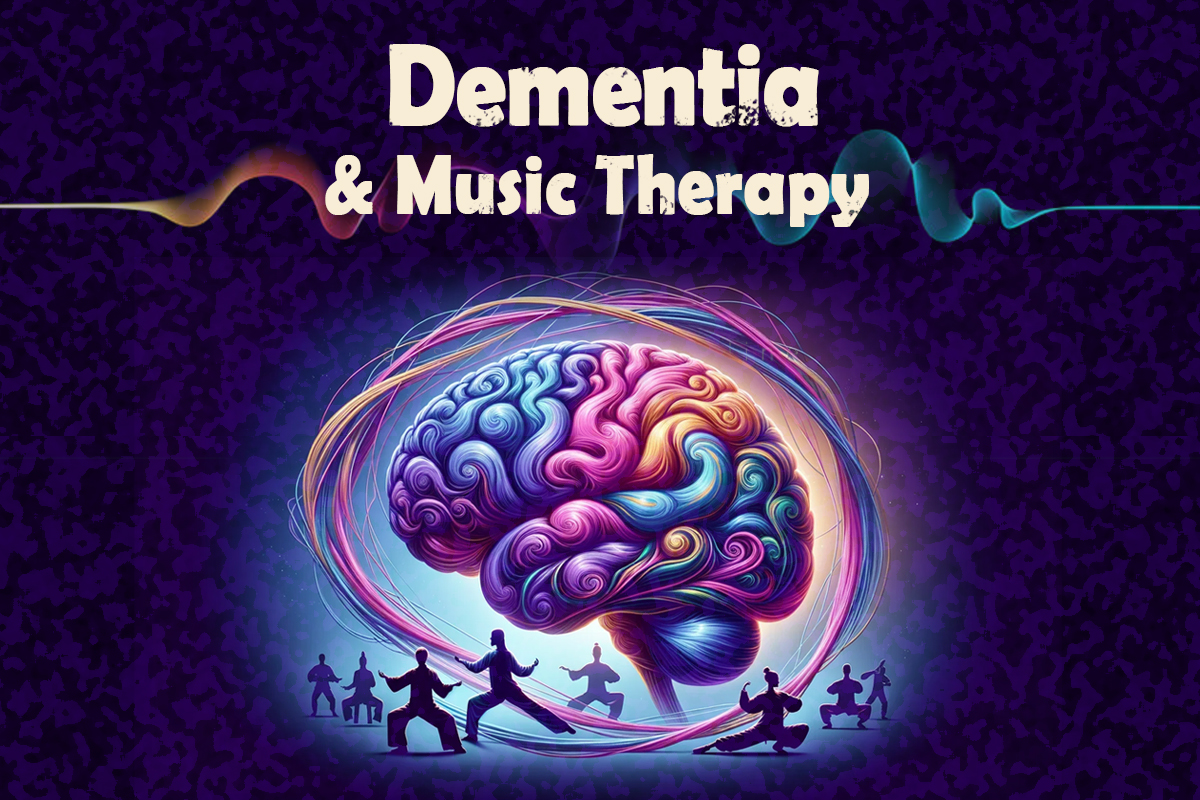In the symphony of life, the rhythm can sometimes falter, especially for those battling chronic illnesses. However, amidst the struggle, there exists a powerful ally that transcends mere entertainment – music. Welcome to a journey where melodies become medicine, where rhythms resonate with resilience. Join us as we explore the transformative realm of music therapy for chronic illnesses.
Music therapy draws on the power of music in a therapeutic relationship to manage a range of conditions and improve your quality of life. A music therapist tailors sessions to your needs. You may sing or play instruments, listen to music, or discuss the meaning of lyrics. You don’t need musical skills, and people of all ages can benefit.
What is Music Therapy for Chronic Illnesses?
Music Therapy for Chronic Illnesses is a form of healing intervention that utilizes music to address the physical, emotional, cognitive, and social needs of individuals. Trained Music therapists use various musical elements such as rhythm, melody, harmony, and lyrics in a therapeutic context to help clients achieve specific therapeutic goals. These goals could include improving communication skills, reducing stress and anxiety, enhancing motor skills, promoting emotional expression, fostering social interaction, and facilitating cognitive development. Music therapy sessions can take place in individual or group settings, and the techniques employed are tailored to meet the unique needs and preferences of each client. It’s a holistic approach that harnesses the power of music to support healing and personal growth.
Music therapy is a form of healing intervention that utilizes music to address the physical, emotional cognitive, and social needs of individuals. Trained music therapists use various musical elements such as rhythm, melody, harmony, and lyrics in a therapeutic context to help clients achieve specific therapeutic goals. These goals could include improving communication skills, reducing stress and anxiety, enhancing motor skills, promoting emotional expression, fostering social interaction, and facilitating cognitive development. Music therapy sessions can take place in individual or group settings, and the techniques employed are tailored to meet the unique needs and preferences of each client. It’s a holistic approach that harnesses the power of music to support healing and personal growth.
Impact of Music on Human Health
The impact of music on human health is profound and multifaceted, encompassing various aspects of physical, emotional, cognitive, and social well-being:
- Emotional Well-being: Music can evoke and regulate emotions. It can uplift mood, reduce stress, anxiety, and depression, and provide comfort during times of sadness or grief. Listening to favorite songs or engaging in music-making activities can stimulate the release of neurotransmitters like dopamine and serotonin, which contribute to feelings of happiness and relaxation.
- Physical Health: Music has been shown to have physiological effects on the body. Listening to music can lower blood pressure, heart rate, and cortisol levels (a stress hormone). Certain types of rhythmic music can synchronize brainwaves and facilitate relaxation or energizing states.
- Cognitive Function: Music engages multiple cognitive processes such as attention, memory, and executive function. Learning to play a musical instrument or engaging in music-based activities can enhance cognitive abilities, particularly in children. Studies have shown that music education correlates with improved academic performance, including in areas such as language development, mathematics, and spatial reasoning. In older adults, music therapy for chronic illnesses has been used to mitigate cognitive decline associated with aging and neurodegenerative diseases like Alzheimer’s.
- Social Interaction: Music has a unique ability to facilitate social bonding and communication. Group music-making activities promote cooperation, teamwork, and a sense of belonging. Music can serve as a shared cultural experience that fosters connections between individuals from diverse backgrounds.
- Quality of Life: Overall, the positive effects of music on emotional, physical, and cognitive health contribute to an improved quality of life. Whether through active participation in music-making or passive listening to music, incorporating music into daily life routines can enhance well-being and provide a sense of meaning and fulfillment.
Understanding What are Chronic Illnesses?
Before delving into the therapeutic melodies, let’s grasp the essence of chronic illnesses. These conditions persist over extended periods, often altering one’s quality of life and requiring ongoing management. From autoimmune disorders to neurological conditions, chronic illnesses pose multifaceted challenges, including physical discomfort, emotional turmoil, and mental strain.
Chronic illnesses are conditions that persist over an extended period, typically for three months or more. These conditions often don’t have a cure and may require ongoing management to control symptoms and maintain a good quality of life. Chronic illnesses can affect various aspects of a person’s health, including physical, mental, and emotional well-being.
Examples of chronic illnesses include:
- Diabetes: A condition where the body either doesn’t produce enough insulin or can’t use it effectively, leading to high blood sugar levels.
- Heart Disease: Conditions that affect the heart, such as coronary artery disease, heart failure, and arrhythmias.
- Arthritis: Inflammation of one or more joints, causing pain and stiffness.
- Asthma: A chronic lung condition characterized by inflammation and narrowing of the airways, leading to difficulty breathing.
- Chronic Pain Syndromes: Conditions like fibromyalgia or chronic back pain, which cause persistent pain that can significantly impact daily life.
- Autoimmune Diseases: Conditions where the immune system mistakenly attacks the body’s tissues, such as rheumatoid arthritis, lupus, or multiple sclerosis.
Living with a chronic illness often requires a multifaceted approach to management, including medication, lifestyle changes, therapy, and sometimes surgery. Additionally, managing the psychological impact of chronic illness, such as stress, depression, or anxiety, is essential for overall well-being.
The Healing Power of Music
Enter music therapy, an age-old practice gaining recognition for its profound healing potential. Music, with its innate ability to evoke emotions and memories, catalyzes therapeutic intervention.
Music has a remarkable ability to soothe, inspire, and heal. It transcends barriers of language and culture, speaking directly to our emotions and souls. The healing power of music has been recognized for centuries, with ancient civilizations using music as a form of therapy. Today, modern science is uncovering the many ways in which music positively impacts our mental, emotional, and physical well-being. One of the most well-known effects of music is its ability to reduce stress and anxiety. Listening to calming music can lower cortisol levels, the hormone associated with stress, and promote relaxation.
Music also has the power to elevate mood and boost happiness. Upbeat, lively music can stimulate the release of dopamine, the “feel-good” neurotransmitter, leading to feelings of joy and pleasure. This is why we often turn to our favorite songs when we’re feeling down or need a pick-me-up. In addition to its emotional benefits, music can also improve cognitive function. Studies have shown that listening to music can enhance memory, focus, and creativity. It can even help with learning and retention, making it a valuable tool in education and rehabilitation settings.
Beyond its passive effects, actively engaging with music through singing, playing an instrument, or dancing can provide even greater benefits. These activities not only strengthen cognitive skills but also foster a sense of connection and community, essential for overall well-being.
Benefits of Music Therapy for Chronic Illnesses
- Pain Management Symphony: Studies have shown that listening to music can alleviate pain by triggering the release of endorphins, the body’s natural painkillers. Through carefully curated playlists and live music sessions, music therapists orchestrate pain management strategies tailored to individual needs.
- Emotional Resonance: Chronic illnesses often take a toll on mental well-being, leading to anxiety, depression, and feelings of isolation. Music therapy provides a safe space for emotional expression, enabling individuals to articulate their innermost feelings through songwriting, improvisation, or simply listening to empathetic melodies.
- Cognitive Harmony: Cognitive impairments are common companions of many chronic conditions, presenting challenges in memory, attention, and executive function. Music therapy exercises stimulate cognitive processes, enhancing memory recall, promoting focus, and fostering creative problem-solving skills.
- Physical Rehabilitation Score: For individuals navigating physical disabilities or limitations, music therapy offers a rhythmic roadmap to rehabilitation. From movement-based interventions like dance therapy to fine motor exercises facilitated by playing instruments, music becomes a medium for restoring mobility, coordination, and strength.
- Social Symphony: Chronic illnesses can lead to social withdrawal and feelings of alienation from peers and loved ones. Music therapy cultivates a sense of belonging through group sessions, ensemble performances, and community music-making initiatives, fostering connections and camaraderie among participants.
Case Studies in Harmony
- Melodic Miracles: Meet Sarah, a lupus warrior whose daily battles with pain and fatigue found solace in the strains of her favorite piano compositions. Through music therapy sessions, Sarah discovered a newfound sense of empowerment, channeling her emotions into lyrical poetry and finding strength in her symphonic journey toward healing.
- Rhythmic Recovery: Jake, diagnosed with Parkinson’s disease, faced tremors and motor challenges that threatened his independence. However, rhythmic drumming sessions offered a rhythmic respite, helping Jake regain motor control and confidence in his body’s abilities. Today, he drums to the beat of his resilience, orchestrating a symphony of strength.
- The Future Harmony: As the resonance of music therapy reverberates across healthcare landscapes, its integration into holistic treatment approaches for chronic illnesses holds immense promise. From hospital wards to rehabilitation centers, the healing harmonies of music offer a complementary pathway towards holistic wellness, enriching lives and restoring hope one note at a time.
Conclusion
In the tapestry of life, where chronic illnesses cast shadows of uncertainty, music emerges as a beacon of light, weaving melodies of healing and hope. Through the transformative power of Music Therapy for Chronic Illnesses, individuals embarking on the journey of chronic illness find solace, strength, and solidarity in the symphony of sound. Let us continue to embrace the healing harmonies of music, orchestrating a future where every note resonates.



